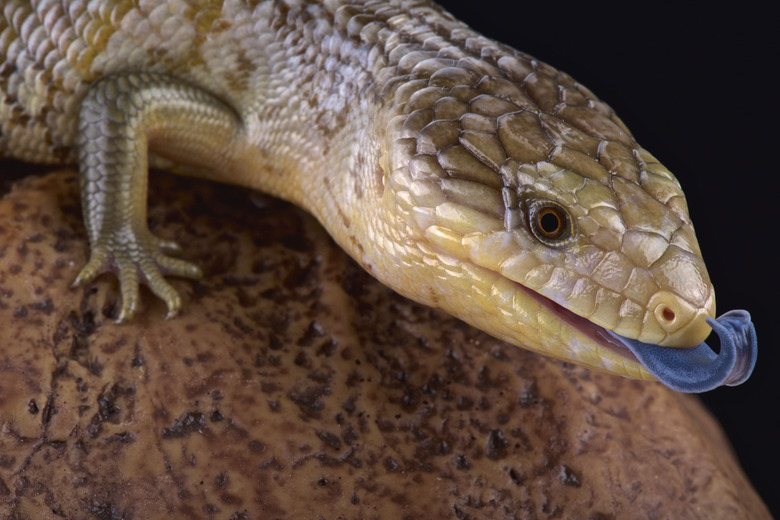Lizards That Live In Tennessee
Tennessee is home to nine lizard species, which belong to the reptilian order squamata. The majority of the lizard species in the state fall under a category known as skinks. Tennessee's lizards can be found in a variety of habitats and are as varied in appearance as they are in behavior and adaptations.
Skinks
Skinks
Tennessee's lizard population includes the broad-headed skink, distinguished by its wide head. It can be found in wooded areas throughout the state. Females and juveniles have five light stripes on an otherwise dark back; adult males are sorrel colored. Equally widespread is the little brown skink, which has black stripes on its sides. Both species consume insects.
The range of the common five-lined skink, a terrestrial lizard, also encompasses all of Tennessee. Individuals are black or dark brown and have five wide, light-colored stripes. They eat larvae, spiders, worms, small crustaceans, mice and other lizards. The southeastern five-lined skink is similar in appearance and diet, but is absent from the northwestern, southwestern and northeastern corners of the state.
The rarest lizard in Tennessee is the coal skink, found in the extreme southeastern corner of the state and a patch in the north-central region on the Kentucky border. It is brown with dark bands on either side that are flanked by narrow, light stripes. Coal skinks consume invertebrates such as insects and spiders and favor moist, wooded habitats.
Northern Green Anole
Northern Green Anole
The green anole is a tree-dwelling lizard. It is usually bright green, but can turn brownish green or grayish brown within seconds in response to temperature and mood fluctuations. Generally between 5 and 8 inches long, the northern subspecies occurs in southern Tennessee. It feeds on insects and the occasional small crab.
Eastern Slender Glass Lizard
Eastern Slender Glass Lizard
The slender glass lizard is a legless species found throughout Tennessee. It measures between 22 and 42 inches in length. The name "glass lizard" refers to its tail, which will break off and regenerate if the lizard is grabbed or injured. The eastern subspecies can be distinguished from the western variety by its tail, which is more than 2.5 times longer than the head and body combined. A secretive lizard, this species fancies dry grasslands and woodlands.
Eastern Six-lined Racerunner
Eastern Six-lined Racerunner
The eastern six-lined racerunner's name is indicative of its running speed and its six, narrow, yellow to white length-wise stripes, which are separated by dark bands. A long, thin tail helps racerunners maintain their balance while running. This insectivorous species favors dry sunny habitats and will burrow into the soil when temperatures drop.
Northern Fence Lizard
Northern Fence Lizard
The northern fence lizard is a spiny species, which means its scales are keeled and pointed. Largely arboreal, it inhabits most of Tennessee. It ranges from 3.5 to 7.5 inches in length. Males are brown, while females are gray with wavy dorsal lines. Both sexes have a dark stripe along the back of the thigh and blue bellies, though the female's is less vibrant. Northern fence lizards have a predilection for beetles, but will also prey on insects, spiders and snails.
Cite This Article
MLA
Alonso, Nathalie. "Lizards That Live In Tennessee" sciencing.com, https://www.sciencing.com/lizards-live-tennessee-8519042/. 13 March 2018.
APA
Alonso, Nathalie. (2018, March 13). Lizards That Live In Tennessee. sciencing.com. Retrieved from https://www.sciencing.com/lizards-live-tennessee-8519042/
Chicago
Alonso, Nathalie. Lizards That Live In Tennessee last modified March 24, 2022. https://www.sciencing.com/lizards-live-tennessee-8519042/
